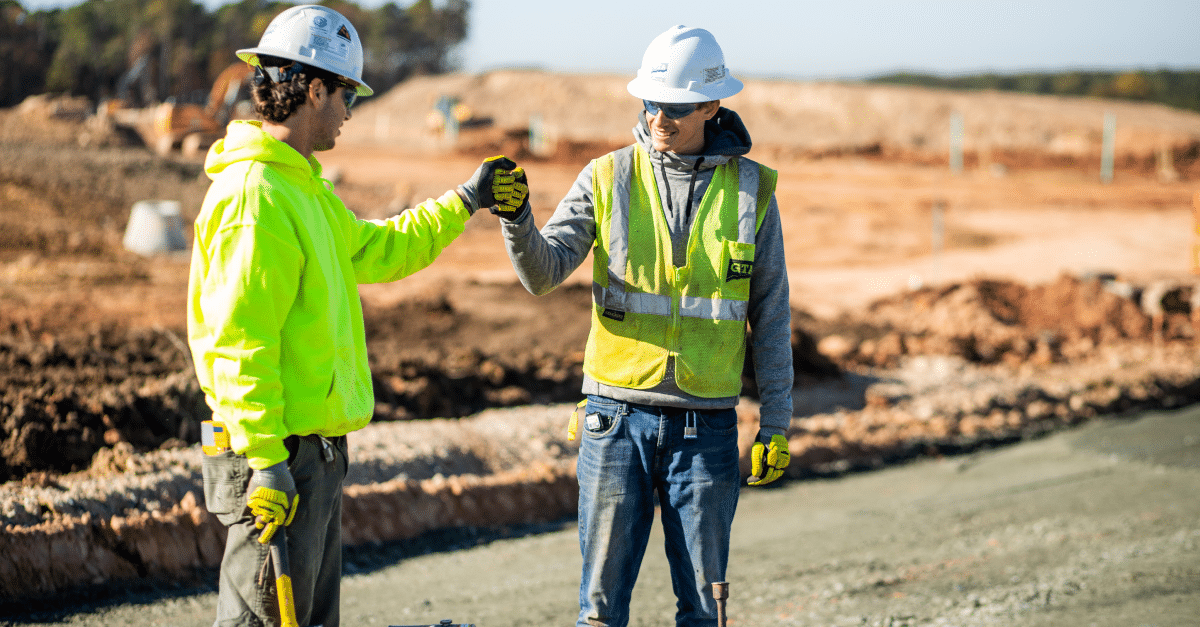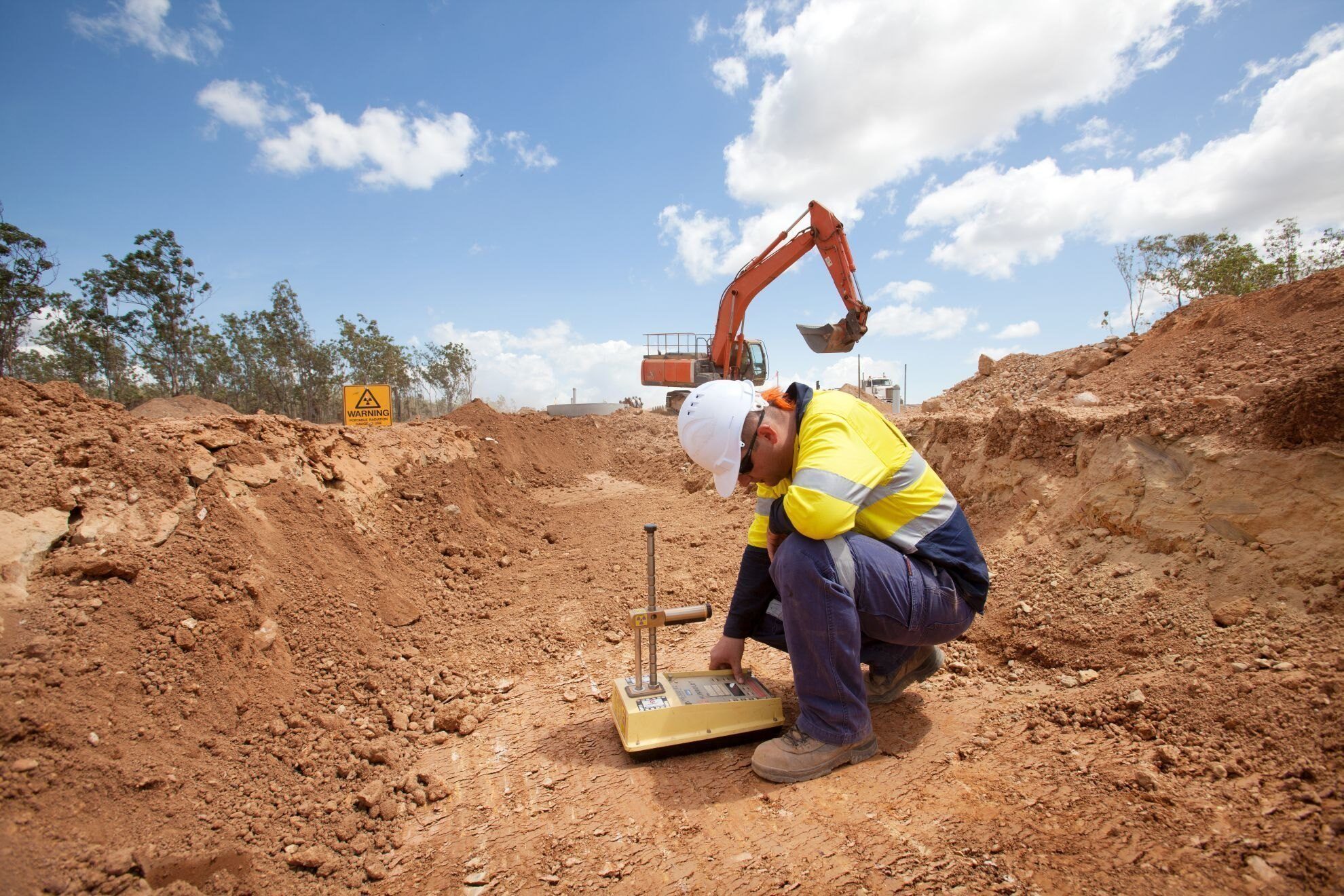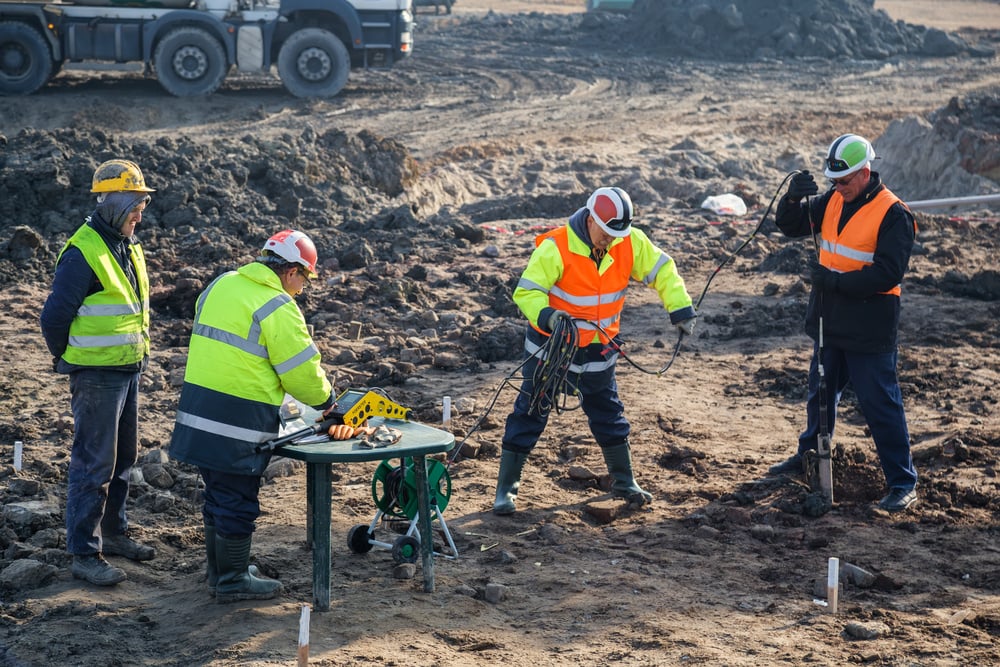Not known Factual Statements About Geotechnical Engineering For Construction Projects
Not known Factual Statements About Geotechnical Engineering For Construction Projects
Blog Article
How Geotechnical Engineering For Construction Projects can Save You Time, Stress, and Money.
Table of ContentsThe Basic Principles Of Geotechnical Engineering For Construction Projects How Geotechnical Engineering For Construction Projects can Save You Time, Stress, and Money.An Unbiased View of Geotechnical Engineering For Construction ProjectsAbout Geotechnical Engineering For Construction ProjectsThe Single Strategy To Use For Geotechnical Engineering For Construction ProjectsThe smart Trick of Geotechnical Engineering For Construction Projects That Nobody is Talking AboutGeotechnical Engineering For Construction Projects Things To Know Before You Buy
and Kovacs, W. (1981 ), An Introduction to Geotechnical Design, Prentice-Hall, Inc. Deep Scan Tech (2023 ): Deep Check Tech reveals concealed structures at the website of Denmark's tallest building. "Geofrost Coring". GEOFROST. Recovered 20 November 2020. Han, Jie (2015 ). Concepts and Method of Ground Improvement. Wiley. ISBN 9781118421307. RAJU, V. R.Ground Enhancement Technologies and Case Histories. Singapore: Research Study Publishing Services. p. 809. ISBN978-981-08-3124-0. Ground Renovation Principles And Applications In Asia. Pariseau, William G. (2011 ). Style evaluation in rock technicians. CRC Press. Hegde, A.M. and Palsule P (Geotechnical Engineering for Construction Projects).S. (2020 ), Efficiency of Geosynthetics Reinforced Subgrade Subjected to Repeated Automobile Plenties: Speculative and Mathematical Research Studies.
Cengage Discovering, Stamford, 666 p. Atkinson, J., 2007. The technicians of dirts and foundations. Taylor & Francis, N.Y., 442 p. Drifting Offshore Wind Generators: Feedbacks in a Sea state Pareto Optimum Designs and Economic Assessment, P. Sclavounos et al., October 2007. Nicholson, D, Tse, C and Cent, C. (1999 ). The Observational Technique in ground design concepts and applications.
Some Known Questions About Geotechnical Engineering For Construction Projects.
Lab and field screening plays a critical duty in this process. By removing samples from the earth's subsurface and applying a collection of tests, geotechnical designers can predict the behaviour of dirt layers and assess their viability for various building endeavours. The significance of geotechnical engineering in civil engineering can not be overemphasized, attributable to numerous aspects: The first action in any geotechnical research study includes determining the dirt type at the building and construction website.
Understanding these features guarantees that just suitable dirt kinds are chosen for the growth, thus avoiding possible structural failures. The structure acts as the bedrock of any type of construction project. Choosing the appropriate foundation kind is a choice that rests on the extensive evaluation provided by geotechnical engineering. This makes certain the longevity and stability of structures by accommodating the lots they will bear.

Geotechnical site investigation is a vital action in the planning and execution of any kind of building and construction job. It entails the collection and evaluation of data connected to the physical buildings of dirt and rock under a recommended construction site. This details is vital for the style and building of secure, secure, and sustainable frameworks.
Indicators on Geotechnical Engineering For Construction Projects You Should Know
, also understood as subsurface expedition, involves a collection of tasks aimed at establishing the soil, rock, and groundwater conditions at a building site. The primary goals are to identify possible geotechnical risks, examine the engineering homes of subsurface products, and provide recommendations for the style and building and construction of foundations, retaining wall surfaces, and various other structures.
The workdesk research study assists in determining prospective geotechnical problems and preparing the subsequent fieldwork. This involves observing the topography, drain patterns, existing structures, vegetation, and any signs of instability or disintegration.
Not known Details About Geotechnical Engineering For Construction Projects
Superficial test pits are excavated to directly observe and sample the dirt and rock. This method works for examining the upper layers of the subsurface and identifying near-surface threats. Non-invasive geophysical techniques, such as seismic refraction, ground-penetrating radar (GPR), and electric resistivity tomography (ERT), are made use of to map subsurface conditions and spot abnormalities.
Soil and rock examples gathered during the field examination go through research laboratory testing to identify their physical and mechanical buildings. Typical research laboratory tests consist of grain size analysis, Atterberg restrictions, compaction tests, triaxial shear tests, and loan consolidation tests. These examinations supply important data for geotechnical analysis and layout. The information accumulated from the workdesk research, website reconnaissance, area investigation, and research laboratory testing are assessed and interpreted to establish a comprehensive understanding of the subsurface conditions.
The primary benefit of geotechnical site examination is guaranteeing the safety and security and security of frameworks. By understanding the subsurface problems, designers can make foundations and various other structural aspects that can hold up against the lots and environmental forces they will certainly undergo. This lessens the risk of settlement, subsidence, and architectural failing.
Geotechnical Engineering For Construction Projects Can Be Fun For Anyone
For instance, recognizing soil qualities can guide the choice of excavation strategies, dewatering techniques, and ground enhancement measures. This makes certain efficient and safe building techniques. Geotechnical website investigations are typically required by constructing codes and policies. Sticking to these requirements makes certain compliance with lawful and security criteria, preventing prospective lawful obligations and project delays.
This details is very useful for job supervisors, architects, and contractors in establishing realistic timetables, spending plans, and backup strategies. Geotechnical Engineering for Construction Projects. Skyscraper Building in a Coastal AreaIn go to these guys a seaside city, a skyscraper residential structure was intended on a site with believed loose sand down payments and a high water table. A detailed geotechnical investigation, Extra resources consisting of borehole drilling, CPT, and geophysical surveys, was performed
Examine This Report on Geotechnical Engineering For Construction Projects
Based upon these searchings for, the foundation design was customized to include deep pile foundations extending right into stable strata, and ground improvement strategies, such as vibro-compaction, were implemented to reduce liquefaction risks. This aggressive strategy made certain the safety and security and security of the structure while avoiding costly post-construction removal. Framework Growth on a Sloping TerrainA significant facilities project, including the building of a freeway and bridges, was prepared on an uneven surface with high slopes.

The Leaning Tower of Pisa (Italy), a legendary building marvel, is infamous for its unintended tilt from substantial geotechnical issues. The tower's structure was inadequately designed to take care of the soft, unpredictable soil below it, resulting in irregular settlement and its unique lean. Our world is populated with outstanding infrastructure projectsfrom looming skyscrapers to sprawling bridgesall standing testament to the advancement of the different building equipment and techniques available.
Geotechnical design is a specialized area within civil engineering that concentrates on examining the actions of earth products. This branch digs deep into the groundinvestigating exactly how the dirt, rock, and groundwater at a building site can influenceand be influenced bythe infrastructure that we set up on and right into them. Before a single block is laid or a concrete foundation poured, geotechnical designers probe into the earthgathering vital information regarding the website's dirt structure, rock structure, and groundwater levels.
Geotechnical Engineering For Construction Projects Fundamentals Explained

is a device used to examine the honesty and load-bearing capacity of piles throughout installation, leveraging the concept of wave propagation. It maximizes building performance by supplying real-time evaluations, thus making sure secure and reliable pile structures. One of the practical applications of geotechnical engineering includes making a decision and executing the ideal techniques for structure building and construction.
Load driving stands for greater than the mere act of inserting structural aspects into the ground. On the contrary, it is a meticulously coordinated procedure of moving a framework's lots past the less secure soil layers closer to the surfacedown to the much more substantial strata that exist below. In the instance of pile driving, think about how geotechnical designers skillfully use this strategy to evenly disperse the framework's weight.
Report this page